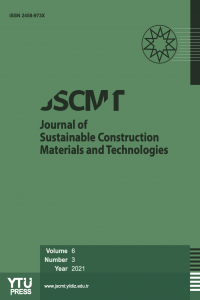Life Cycle Costing and Assessment of Building Slab Materials
Life Cycle Costing and Assessment of Building Slab Materials
The selection process of material for slab construction must be well guided to ensure an effective and efficient slab. While numerous alternatives can be selected, some materials remain the dominant choice in the Nigerian construction industry. The usage of Concrete is now competing with eco-friendly materials such as Polystyrene and Hollow clay pot. This study researches into the life cycle cost of the three materials to determine the material with the lowest life cycle cost. It also assesses the environmental impacts posed by the production of the materials to the society. Cost data were retrieved from Design documents, Documented Bid Records, Bills of Quantities, Current documented prices, Maintenance schedules, and Slab Performance Models. Environmental Impact Assessment, structured interview, and Questionnaires were the collection instruments used to obtain assessment data. The analysis involved NPV discounting, Shadow pricing techniques, Sensitivity analysis, Descriptive statistics and Mean item scoring. The research discovered that although Concrete poses less cost on the slab users, Hollow clay pot slab possesses the lowest life cycle cost and differs from Polystyrene with a very close margin of less than 10%. Major environmental impacts posed by the production of the materials were air pollution, badlands due to excessive mining, gas flaring, and environmental waste. The study then recommends that Hollow clay pot and Polystyrene serve as a better alternative for the commonly used Concrete and should, therefore, be adopted for slab construction.
Keywords:
Slab, Concrete, Polystyrene Hollow clay pot,
___
- 1. Murty, C. V. R. (2003). How do Earthquakes affect Reinforced Concrete Buildings? Indian Institute of Technology, India. 2. ACI 302.1R (1996). Guide for concrete floor and slab construction. Report of the ACI Committee 302, 1R, USA 3. Ogundiran I. A. & Adedeji, Y. M. D. (2014). Sustainable Construction: Comparative Advantages of Expanded Polystyrene (EPS) Fascia in Housing Delivery in Nigeria. Civil and Environmental Research. ISSN 2224-5790 Vol.6, No.10, 2014. 4. Visser, W. D. (2009). Which type of slab is the most effective solution to concrete structures? BSc. Research. Faculty of Engineering, BEIT, University of Pretoria. October 2009. 5. Ibrahim, D., Bankole, O. C., Ma’aji, S. A., Ohize, E. J. & Abdul, B. K. (2013). Assessment of the Strength Properties of Polystyrene Material used in Building Construction in Mbora District of Abuja, Nigeria. IJERD, 6(12), May 2013, PP. 80-84. 6. Goodier, K. (2009). “Making and Using an Expanded Plastic’’ New Scientist 240:706. 7. Bajracharya, R. M., Lokuge, W. P., Karunasena, W., Lau, K.T. & Mosallam, A. S. (2012). Structural Evaluation of Concrete Expanded Polystyrene Sandwich Panels for Slab Applications. Conference: 22nd Australasian Conference on the Mechanics of Structures and Material. December 2012. 8. Adenuga, O. A. & Sotunbo, G. (2014). An Assessment of Time Variation in Solid and Hollow Floor Construction in Lagos State. Organization, Technology and Management in Construction Journal. 6(1)2014, pp 985 – 993. 9. Lai Tina. (2010). Structural behaviours of bubble deck slabs and their applications to light weight bridge deck. MSc Thesis: Department of Civil and Environmental Engineering, MIT. 10. Singh, P. & Scanlon, A. (2013). Concrete in Residential Construction. Research Series Report No. 110. Pennsylvania Housing Research Center, Penn State University. 11. UNESCO-NIGERIA. (2008). Technical & Vocational Education Revitalisation Project-Phase II. Technical notes on Building Construction. 12. Ozbay, K., Parker, N. A., Jawad, D. & Hussain, S. (2003). Guidelines for Life Cycle Cost Analysis. Report for Federal Highway Administration. 13. Alexandra, S. & Ferreira Real, C. (2010). Contribution of Life Cycle Cost analysis to design Sustainability in Construction. Instituto Superior Técnico, Universidade Técnica de Lisboa 14. Bowyer, J., Fernholz, K., Bratkovich, S., Howe, J., Stai, S. & Frank, M. (2013). Life Cycle Cost Analysis of Non-Residential Buildings. A report by Dovetail Partners, Inc.
- Başlangıç: 2016
- Yayıncı: Yıldız Teknik Üniversitesi
